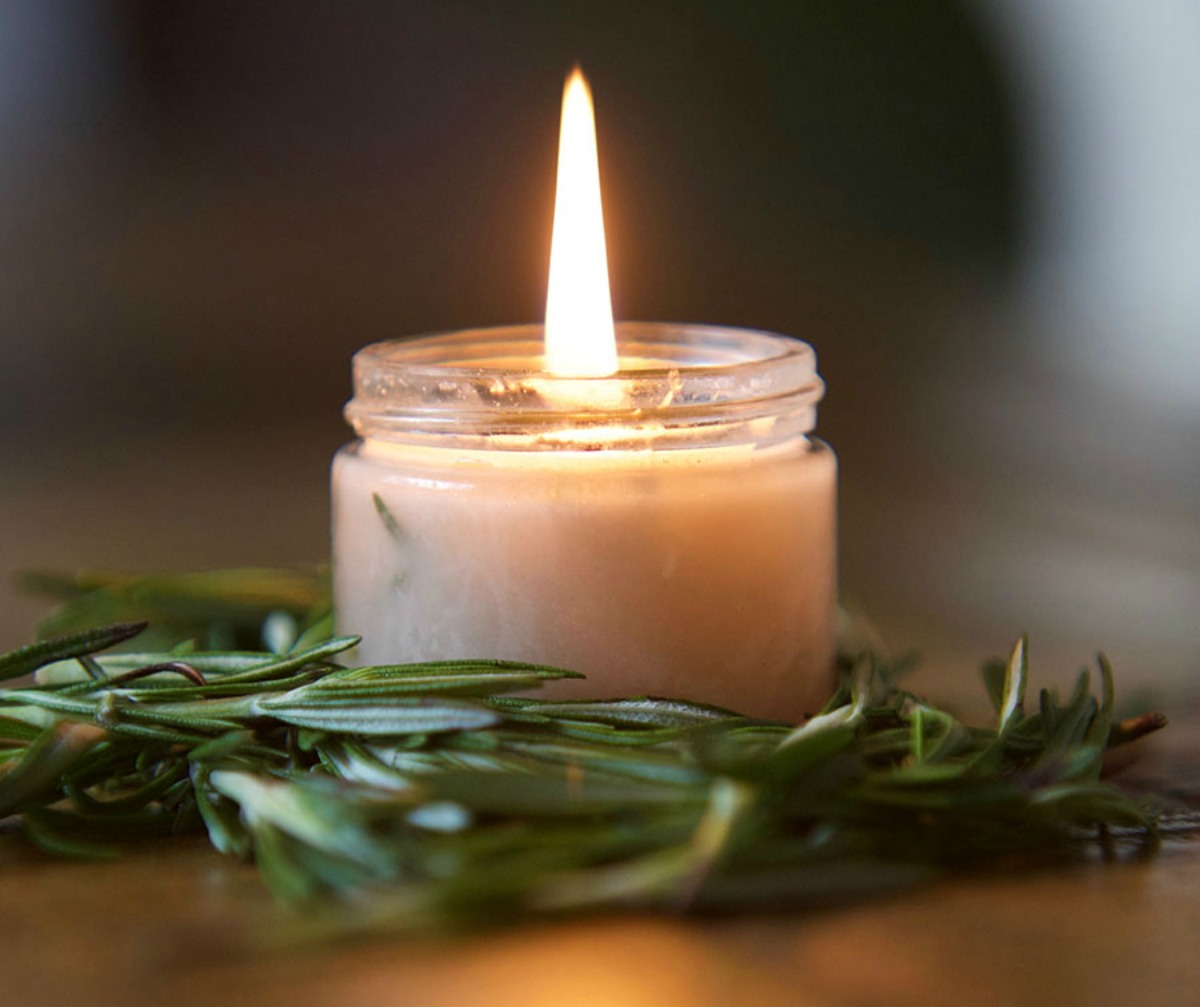Home>Gardening Techniques>DIY Projects>How To Make Waxed Amaryllis Bulbs


DIY Projects
How To Make Waxed Amaryllis Bulbs
Published: January 22, 2024
Learn how to make beautiful waxed amaryllis bulbs at home with this DIY project. Create stunning decorations for any occasion.
(Many of the links in this article redirect to a specific reviewed product. Your purchase of these products through affiliate links helps to generate commission for Chicagolandgardening.com, at no extra cost. Learn more)
Table of Contents
Introduction
Welcome to the world of DIY projects! If you’re someone who loves to roll up your sleeves and create something beautiful from scratch, then you’re in the right place. In this article, we’ll dive into the fascinating world of making waxed amaryllis bulbs – a unique and decorative way to showcase these stunning flowers.
Waxed amaryllis bulbs are a popular choice for those who want to enjoy the beauty of blooming flowers without the hassle of traditional gardening. These bulbs are coated with a special wax that seals in moisture and nutrients, allowing the plant to grow and bloom without the need for soil or water. Not only are they low-maintenance, but they also make for stunning centerpieces or gifts.
But don’t worry – you don’t need to be a horticulture expert or have a green thumb to create your own waxed amaryllis bulbs. With a few simple materials and some step-by-step guidance, you can easily make these beautiful creations right at home.
In this article, we will provide a comprehensive tutorial on how to make waxed amaryllis bulbs, including the materials you’ll need and the step-by-step process to ensure success. We’ll also share some tips on how to care for your waxed amaryllis bulbs once they’re made so that you can enjoy their beauty for as long as possible.
So, whether you’re looking to add a touch of greenery to your home or want to surprise someone with a unique and thoughtful gift, making waxed amaryllis bulbs is a fun and rewarding project that you can easily accomplish. So, let’s get started with the materials you’ll need.
What You Will Need
Before you start making waxed amaryllis bulbs, it’s important to gather all the necessary materials. Here’s a list of what you’ll need:
- Amaryllis bulbs: Choose healthy bulbs that are firm and free from any signs of damage or disease.
- Wax: Opt for a high-quality paraffin wax or a specially formulated wax designed for flower bulbs.
- Wax melting pot: Use a dedicated pot or a double boiler to melt the wax safely.
- Thermometer: This will help ensure that the wax reaches the right temperature for dipping the bulbs.
- Wax paper: Prepare a sheet of wax paper to place the dipped bulbs on and allow them to dry.
- Optional: Decorative elements such as dried flowers, glitter, or ribbon to embellish the bulbs.
It’s worth noting that working with hot wax can be potentially dangerous, so be sure to follow proper safety precautions. Use heat-resistant gloves and work in a well-ventilated area to avoid any accidents or injuries.
Now that you have all the necessary materials ready, let’s move on to the step-by-step process of making waxed amaryllis bulbs.
Step 1: Prepare the Bulbs
The first step in making waxed amaryllis bulbs is to properly prepare the bulbs. Follow these simple instructions:
- Inspect the bulbs: Before starting, carefully examine the amaryllis bulbs for any signs of damage, rot, or disease. Discard any bulbs that are unhealthy or show any abnormalities.
- Clean the bulbs: Gently remove any excess soil or debris from the bulbs by lightly brushing them or wiping them with a soft cloth. Ensure that the bulbs are clean and dry before proceeding.
- Trim the roots: If there are long, straggly roots attached to the bulbs, you can trim them down to around 1-2 inches in length. This will help the bulbs fit into the wax later on.
- Remove the dried foliage: Amaryllis bulbs often have dry and withered leaves attached to them. Carefully snap off or cut away these dried foliage, leaving only the bulb itself.
By properly preparing the bulbs, you ensure that they are healthy and ready to be dipped in wax. It’s important to handle the bulbs with care to prevent any damage during this process.
Now that the bulbs are prepared, let’s move on to the next step – heating the wax.
Step 2: Heat the Wax
Once you have prepared the amaryllis bulbs, the next step is to heat the wax. Follow these instructions to ensure the wax is heated to the proper temperature:
- Prepare the wax melting pot: If you are using a dedicated wax melting pot, fill it with the desired amount of wax. If you are using a double boiler, fill the bottom pot with water and place the wax in the top pot.
- Set up a thermometer: Attach a thermometer to the side of the wax pot to monitor the temperature. It’s important to heat the wax to the correct temperature for optimal results.
- Heat the wax: Turn on the heat source and start melting the wax. Stir occasionally to ensure even melting. Different types of wax will have specific melting temperatures, so refer to the product instructions for guidance on the temperature range.
- Monitor the temperature: Keep a close eye on the thermometer to ensure the wax reaches and maintains the ideal temperature. This is typically between 160°F (71°C) and 180°F (82°C) for most wax types.
Heating the wax to the correct temperature is crucial for achieving a smooth and even coat on the amaryllis bulbs. Be cautious not to overheat the wax, as it can become too thin or cause discoloration of the bulbs. If using a double boiler, make sure the water in the bottom pot does not fully evaporate.
Now that the wax is properly heated, it’s time to move on to the next step – dipping the bulbs in wax.
Step 3: Dip the Bulbs in Wax
Now that the wax is at the ideal temperature, it’s time to dip the prepared amaryllis bulbs into the wax. Follow these steps to ensure proper wax coating:
- Hold the bulb securely: Hold the amaryllis bulb firmly by the base, ensuring a stable grip throughout the dipping process. This will help prevent any slips or accidents.
- Dip the bulb: Slowly lower the bulb into the melted wax, allowing the wax to completely cover the bulb. Rotate the bulb gently to ensure an even coat on all sides.
- Remove excess wax: As you lift the bulb out of the wax, let the excess wax drip off back into the pot. You can gently shake the bulb or lightly tap it on the side to help remove any excess wax.
- Place on wax paper: Carefully place the dipped bulb on a sheet of wax paper to dry. Make sure it is positioned upright and not touching other bulbs or surfaces to prevent sticking.
- Repeat the process: Continue dipping the remaining amaryllis bulbs, following the same steps. Ensure that each bulb is coated evenly and placed on the wax paper without touching other bulbs.
Remember to work efficiently but carefully during this step, as the wax will begin to cool and harden relatively quickly. If you wish to add any decorative elements such as dried flowers or glitter, gently press them onto the wax-coated bulb before it dries completely.
Now that the bulbs are properly dipped in wax, it’s time to move on to the next step – allowing the wax to dry.
Step 4: Let the Wax Dry
After dipping the amaryllis bulbs in wax, it’s important to let the wax dry completely. This step ensures that the bulbs are properly sealed and ready to be displayed or planted. Follow these instructions to allow the wax to dry:
- Leave the bulbs undisturbed: Once you have placed the dipped bulbs on the wax paper, allow them to sit undisturbed in a cool and dry location. This will help the wax harden and set properly.
- Avoid touching or moving the bulbs: It’s important to resist the temptation to touch or move the bulbs during the drying process. Any disturbance may cause the wax to crack or chip, compromising the integrity of the seal.
- Monitor the drying time: The drying time may vary depending on the thickness of the wax coating and the environmental conditions. Generally, it takes around 12 to 24 hours for the wax to fully dry and harden.
- Check for complete drying: To ensure that the wax is fully dry, gently touch the surface of the bulbs. If there is no tackiness or softness, the wax has dried completely.
During the drying process, you can also take the opportunity to clean up any excess wax that may have dripped onto the wax paper. Use a gentle touch to avoid damaging the coating on the bulbs.
Once the wax is completely dry, you can either display the waxed amaryllis bulbs as they are or move on to the next step – planting and caring for them.
Step 5: Plant and Care for the Waxed Amaryllis
After the wax has dried completely, it’s time to plant and care for your waxed amaryllis bulbs. Follow these steps to ensure proper care and maintenance:
- Select a container: Choose a pot or a decorative container that is slightly larger than the bulb. Make sure the container has drainage holes to prevent waterlogging.
- Add potting mix: Fill the container with well-draining potting mix, leaving enough space for the bulb to be planted. Avoid compacting the soil too tightly.
- Plant the bulbs: Gently press the waxed amaryllis bulbs into the potting mix, ensuring that the upper portion of the bulb is exposed. Avoid burying the bulb completely.
- Provide light and warmth: Place the planted bulbs in a bright location with indirect sunlight. A temperature range of 60 to 70°F (15 to 21°C) is ideal for the growth of amaryllis.
- Water sparingly: Unlike traditional amaryllis bulbs, waxed bulbs do not require regular watering. Only water the bulbs when the soil feels dry to the touch, and be mindful not to oversaturate the soil.
- Monitor growth and blooming: Over time, you will start to see new shoots emerging from the bulbs. As they grow, you can provide support by placing a stake near the bulb and tying the shoots loosely with a soft string.
- Enjoy the blooms: With proper care, the waxed amaryllis bulbs will produce beautiful blooms that can last for several weeks. Keep enjoying their beauty and make sure to remove any faded flowers to encourage new growth.
Remember that waxed amaryllis bulbs are more forgiving in terms of watering, as the wax coating helps retain moisture. However, it’s important not to overwater them, as excessive moisture can lead to bulb rot.
By following these care instructions, you can enjoy the beauty of your waxed amaryllis bulbs and marvel at their vibrant blooms.
Conclusion
Congratulations! You’ve successfully learned how to make waxed amaryllis bulbs, turning ordinary bulbs into stunning decorations or gifts. By following the step-by-step instructions outlined in this article, you can create these captivating floral displays right at home.
Waxed amaryllis bulbs are not only visually appealing but also low-maintenance, making them perfect for those with busy lifestyles or limited gardening experience. The wax coating provides moisture and nutrients, eliminating the need for soil and frequent watering. These bulbs can be displayed as centerpieces or gifted to friends and family, bringing a touch of nature’s beauty into any space.
Remember, proper preparation of the bulbs, heating the wax to the correct temperature, and allowing the wax to dry completely are vital steps for successful waxing. Additionally, caring for the waxed amaryllis bulbs involves planting them in well-draining soil, providing adequate light and warmth, and watering sparingly.
Put your creativity to work by experimenting with different wax colors, decorations, or container choices to personalize your waxed amaryllis bulbs. With each successful blooming, you will be filled with a sense of accomplishment and joy.
So, why not embark on this DIY project and enjoy the beauty of waxed amaryllis bulbs throughout the year? Prepare your materials, follow the steps carefully, and let your creativity flourish as you create these unique and captivating floral displays. Happy waxing!



